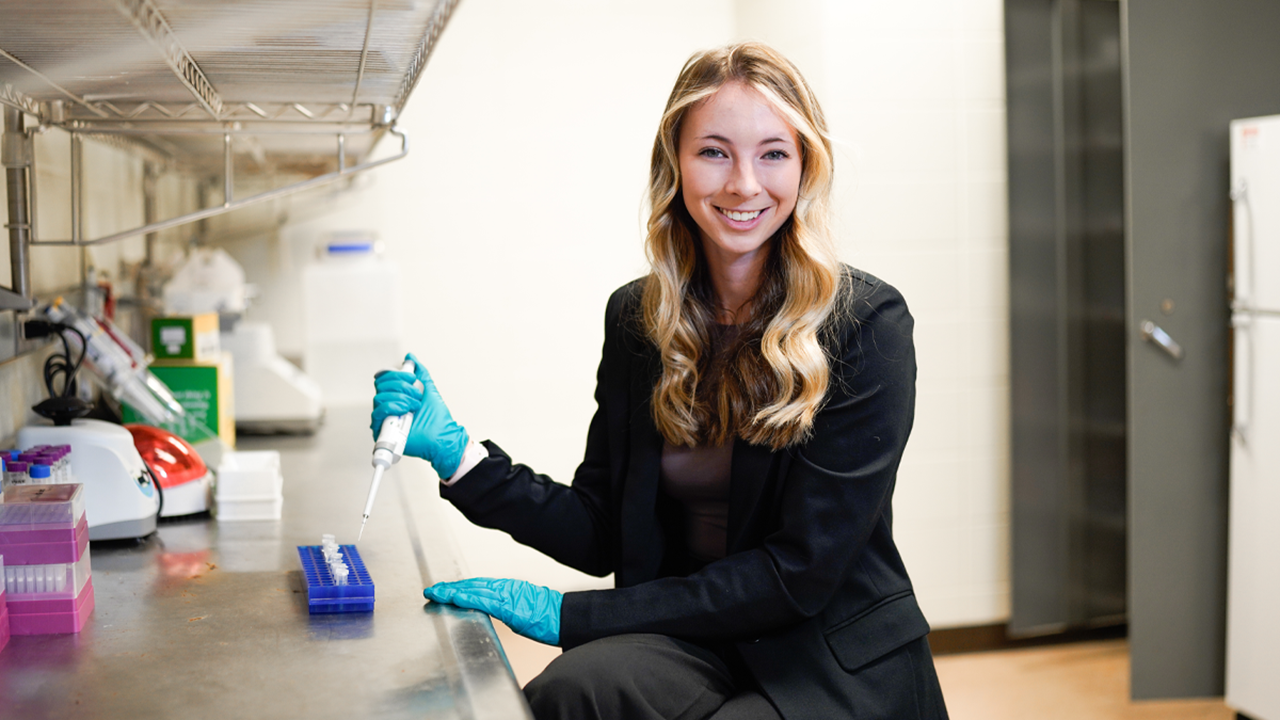Recent USD Graduate Researches Reproductive Behaviors in Birds

Inspired by her molecular biology professor, Andrea Liebl, Ph.D., Beberg applied to work in her research lab to expand her knowledge on telomeres. Beberg’s research focused on chestnut-crowned babblers, a bird native to Southeast Australia.
"Telomeres are chromosomal elements that protect and maintain DNA as it replicates," explained Beberg, who earned her degree in medical biology. "As an individual ages, the telomeres get shorter; thus, telomere length is expected to correspond with lifespan."
The purpose of Beberg's research was to examine the relationship between telomere length and the helping behavior of the chestnut-crowned babbler. She hypothesized that the telomere length during development would predict whether an individual breeds or helps others as an adult.
Telomeres had never been measured in the chestnut-crowned babblers species before, so Beberg developed a protocol using qPCR, a technique that determines the actual amount of polymerase chain reaction (PCR) product measured at a specific cycle. Beberg's new protocol allowed her to measure the telomeres in hatchling, fledgling and adult birds to compare the changes in telomere length with adult breeding and helping behaviors.
Bebergs's research contributed to the understanding of the evolutionary complex breeding strategy of cooperative breeding. It was a significant milestone to demonstrate that telomeres can be measured in the chestnut-crowned babbler species.
"Telomeres are present in all vertebrates, so my results from this study could potentially provide insights into other species, such as humans," said Beberg.
Beberg received a CURCS mini-grant and an undergraduate research scholarship to complete her research project. Beberg plans to continue her education by attending medical school with hopes of becoming a physician.



